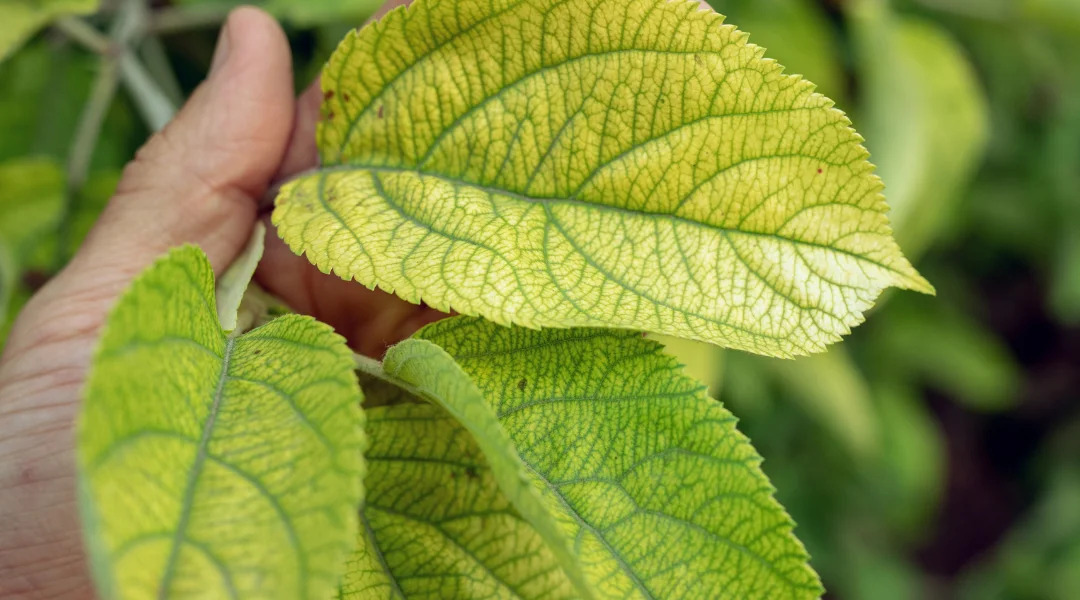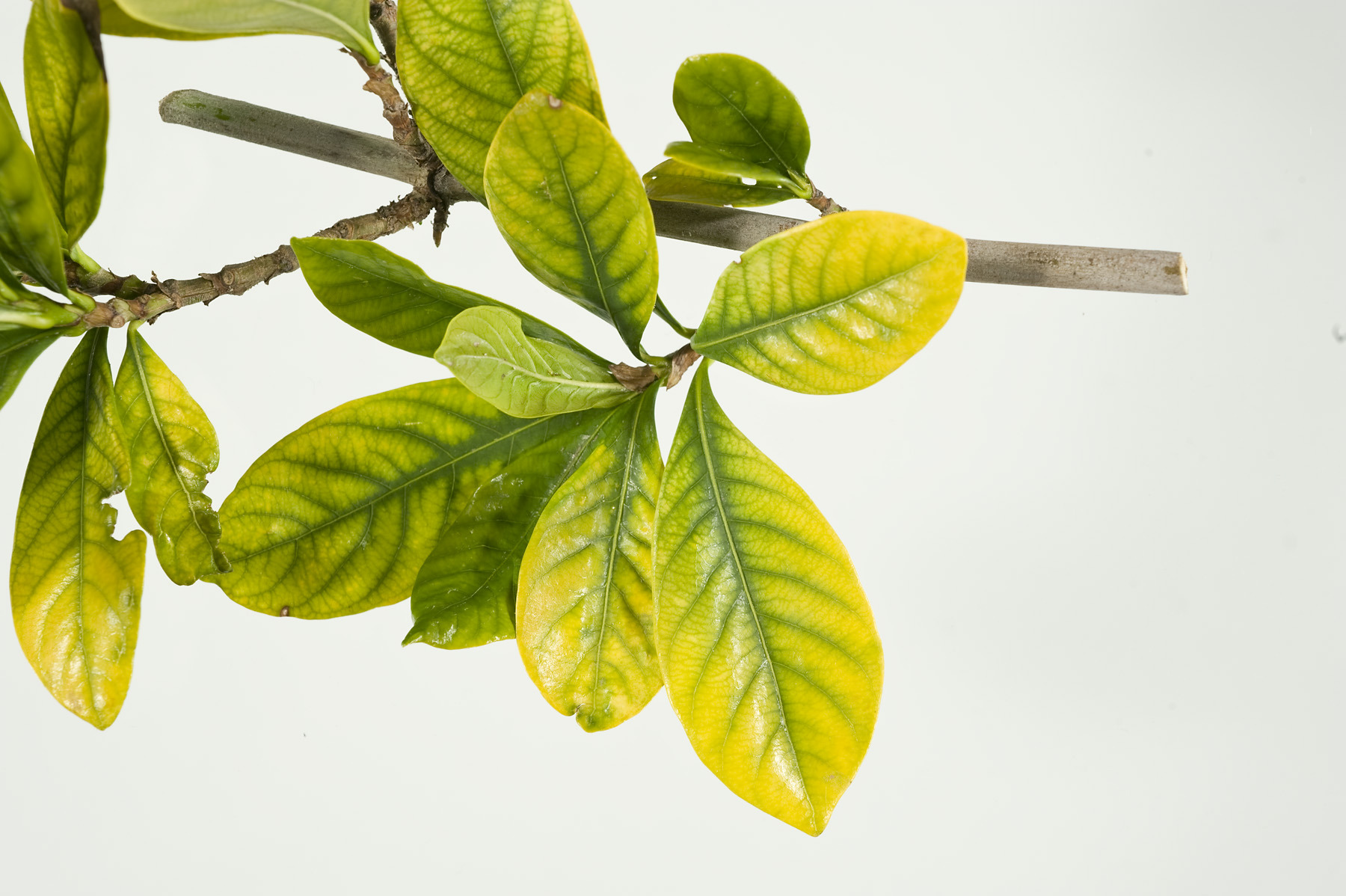What Are The Iron (Fe) Nutrient Deficiencies In Plants?
Iron (Fe) is an essential micronutrient for plants, playing a critical role in various biochemical processes, including photosynthesis and respiration. However, iron deficiencies can impede plant growth and development, leading to visible symptoms and decreased productivity.
Overview of Iron Nutrient Deficiency
Iron (Fe) is an essential micronutrient for plants, and its deficiency can have severe consequences on the health of plants. Iron deficiency in plants is one of the most common nutrient deficiencies. It often appears as yellowing or chlorosis between leaf veins and is usually accompanied by stunted growth.
Iron plays an important role in photosynthesis, respiration, energy production, and nitrogen metabolism. Low iron levels can lead to decreased yields and poorer quality crops, so it’s important to monitor and address symptoms of Fe deficiency as soon as they appear.
For optimal plant growth, the soil must be regularly tested for pH levels, micronutrients, trace elements, and other factors that may affect plant health. Fertilizers can be applied to boost iron levels and correct any deficiencies. Additionally, proper watering practices will help ensure adequate iron uptake by plants.
What are the Symptoms of Iron Deficiency?
Symptoms of iron deficiency in plants usually appear as yellowing or chlorosis between the veins of leaves. The leaves may become thin, weak, and brittle, or they may curl or twist. New leaves may be lighter in color than normal and growth can be stunted.
Iron plays an important role in photosynthesis, respiration, energy production, and nitrogen metabolism, so a lack of iron can lead to decreased yields and poorer quality crops.
Other signs of iron deficiency include leaf drop, wilting and discoloration of foliage, reduced flowering and fruiting capabilities, poor root system development, and changes in plant shape. Initial symptoms can also vary depending on the type of plant affected. For instance, citrus trees tend to develop yellowish-green mottling on their foliage when lacking iron.
Causes of Iron Deficiency in Plants
Iron deficiency in plants can be caused by a number of factors. The primary cause is a lack of available iron in the soil, which can occur due to poor drainage or acidic soils with low pH levels. Other causes include excessive amounts of phosphorous, manganese, copper, zinc and other heavy metals in the soil that can interfere with the uptake of iron.
In addition, some types of plants may require more iron than others, so you may need to adjust your fertilization practices accordingly. Lastly, over-watering can lead to an oxygen deficiency in the soil, making it difficult for plants to absorb iron from their environment.
Interveinal Chlorosis
Interveinal chlorosis is a condition in which the leaves of a plant display yellowing between veins due to a lack of sufficient chlorophyll. It is caused by an iron (Fe) deficiency, as well as deficiencies in other essential nutrients such as manganese and zinc.
While it can be caused by environmental factors like poor drainage or acidic soils, it may also be the result of inadequate fertilization practices. To prevent interveinal chlorosis, it's important to ensure that your soil has an appropriate pH level and contains adequate amounts of all essential nutrients.
Additionally, you may need to adjust your fertilizer application rate if your plants are showing signs of nutrient deficiencies. If you suspect an iron deficiency is causing interveinal chlorosis in your plants, consider applying a chelated iron supplement directly to the soil.
What is Interveinal Chlorosis?
Interveinal chlorosis is a condition in which the leaves of a plant display yellowing between veins due to a lack of sufficient chlorophyll. It is caused by an iron (Fe) deficiency, as well as deficiencies in other essential nutrients such as manganese and zinc.
The common symptoms can be seen on the leaves of plants, with yellow or pale green patches appearing mainly between the veins while the veins remain green. Interveinal chlorosis can also cause stunted growth and decreased yields.
The main cause of interveinal chlorosis is an inadequate supply of iron, usually due to poor soil conditions or incorrect fertilizer application. Other environmental factors such as excessively wet or acidic soils can also contribute to this condition, as can excessive amounts of certain elements like fluoride and aluminum.
How Does Interveinal Chlorosis Affect Plant Growth?
Interveinal chlorosis, caused by a lack of sufficient iron (Fe) in plants, can have a significant impact on plant growth. As the leaves become yellow between the veins, photosynthesis is impaired and energy production is reduced.
This results in stunted growth and decreased yields. In addition, plants that are affected by interveinal chlorosis are more susceptible to disease and damage from pests or herbicides. Ultimately, interveinal chlorosis can lead to death if the deficiency is not remedied quickly.
How is Interveinal Chlorosis Diagnosed?
Interveinal chlorosis, or yellowing between the veins of plant leaves, is often caused by an iron (Fe) deficiency. To accurately diagnose and treat this condition, it's important to understand the underlying cause and take appropriate action.
The first step in diagnosing interveinal chlorosis is testing your soil for pH levels as well as other essential nutrients like manganese and zinc. Once you have established the nutrient levels in your soil, you can determine whether there may be a lack of iron present that is causing the iron chlorosis. If this is indeed the case, applying a chelated iron supplement directly to the soil can help address the issue quickly.
Iron Availability in Soils
Iron availability in soils is an important factor for plant health. Iron is an essential nutrient for normal plants and inadequate levels can lead to iron deficiency, which causes iron deficiency symptoms such as interveinal iron chlorosis. It's important to test your soil's pH levels and other nutrients like manganese and zinc in order to accurately diagnose this condition.
The amount of iron available will depend on the soil type, pH level, and the presence of other elements that may be inhibiting its absorption. For example, high levels of calcium can reduce the availability of iron in soils, while organic matter can help increase it.
To ensure optimal iron availability in soils, farmers should assess their soil regularly and take steps to adjust their management accordingly. This could include using chelated iron supplements or adjusting pH levels with lime if necessary. Taking these measures will help guarantee healthy, productive yields over time.
Is There a Link Between Soil pH and Iron Availability?
The relationship between soil pH and iron availability is an important one for farmers to understand. Soil pH is a measure of the acidity or alkalinity of the soil, and can have a significant effect on nutrient availability, including iron.
Generally speaking, higher pH levels (above 6.5) in soils will lead to lower availability of iron, while lower pH levels (below 6.0) will increase its availability. With this in mind, it's essential for farmers to test their soil regularly and adjust their management accordingly if needed. For example, if the soil has a high pH level then adding lime can reduce it and help make more iron available to plants.
It's also worth noting that other elements such as manganese and zinc can affect iron availability too, so testing these should also be part of any routine maintenance schedule. Ultimately, understanding the link between soil pH and iron availability is an important step towards ensuring healthy soils and productive yields over time.
How Can Iron Availability be Improved in Soil Samples?
Iron availability in soil samples can be improved by adjusting the soil pH. This helps to ensure that the right amount of iron is available for plants to take up. To do this, farmers should test their soil regularly and adjust their management accordingly if needed.
For example, if the soil has a high pH level then adding lime can reduce it and help make more iron available to plants. Additionally, other elements such as manganese and zinc can also affect iron availability, so testing these should also be part of any routine maintenance schedule.
Furthermore, using organic matter such as compost or manure can help increase the levels of iron in soils as well as providing other important nutrients for plants.
Finally, foliar feeding with an iron-rich fertilizer may also help to boost nutrient levels in certain cases. With these strategies in place, farmers can effectively improve their soil's ability to provide sufficient amounts of iron for plant growth.
Treating/Correcting Iron Deficiencies in Plants
Iron deficiencies in plants can be treated and corrected by adjusting soil pH levels, testing and adding other elements such as manganese and zinc, using organic matter such as compost or manure, and foliar feeding with an iron-rich fertilizer.
To adjust soil pH levels, farmers should test the soil regularly to ensure the right amount of iron is available for plants to take up. Adding lime can help reduce high pH levels to make more iron available for uptake. Testing for other elements such as manganese and zinc can also affect the availability of iron, so regular testing should be part of any routine maintenance schedule.
Using organic matter such as compost or manure helps to increase the level of iron in soils while providing other important nutrients for entire plants. Finally, foliar feeding with an iron-rich fertilizer may also provide a boost when needed. With these strategies in place, farmers can effectively treat and correct iron deficiencies in their plants.
What Are the Different Ways to Correct an Iron Deficiency in Plants?
Correcting iron deficiencies in plants can be done in a variety of ways. Adding iron-rich fertilizers to the soil is one of the most common methods, as it helps provide an immediate source of iron for the plants. Applying sulfur to acidify the soil can also help make more iron available for uptake.
Lime may be added to reduce high pH levels and make more iron available for uptake. Compost or manure can provide not only additional iron, but other important nutrients that help support plant growth.
Finally, testing for other elements such as manganese and zinc can affect the availability of iron, so regular testing should be part of any routine maintenance schedule.
With these strategies in place, farmers can effectively treat and correct iron deficiencies in their plants while ensuring a healthier and more productive crop.












